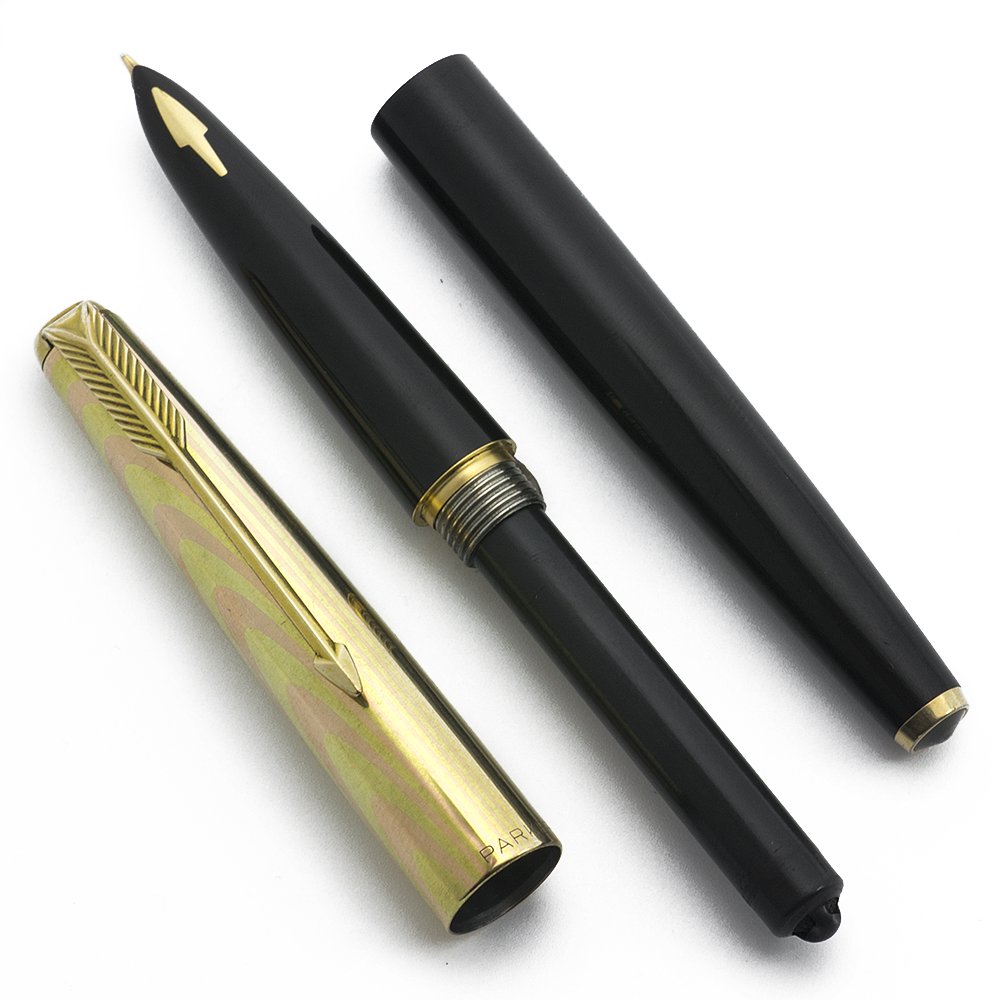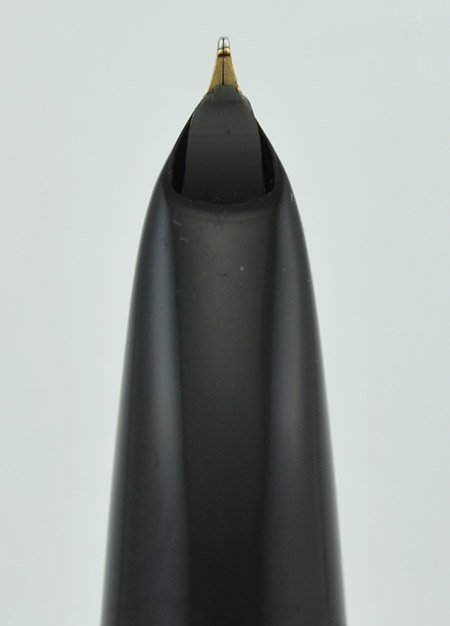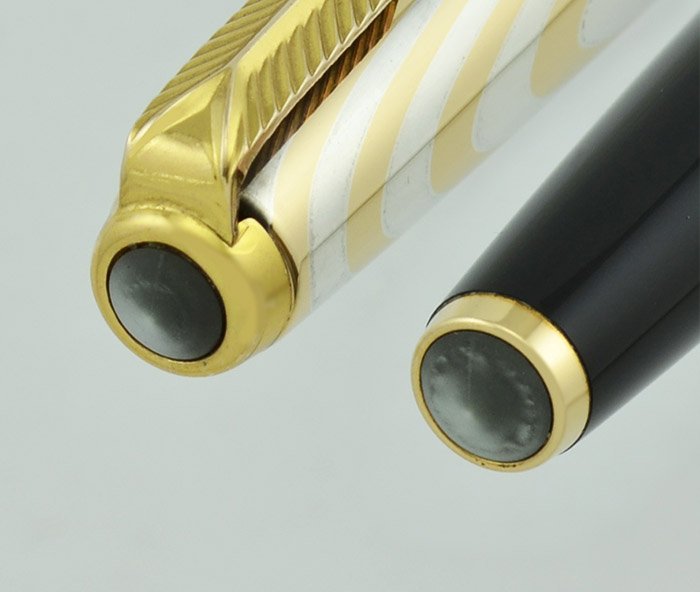Product Description
Type Fountain pen with unique filling system
Product Name Parker 61, Mark I
Manufacturer and Year Parker, USA, 1957-59. as based off the cap.
Length 5-1/2"
Filling System Capillary filling system which is unique to this model. See further details below.
Color Black body with "Rainbow" cap of gold fill and silver arching "rainbow" swirls. The cap says, "1/10 12K GF," in a shield pattern. This was the "Heritage" cap. There are two pearlescent jewels on either end of the pen.
Nib Fine 14k nib is smooth, with good tipping material. Very smooth.
Condition Superior condition, near perfect except for some micoscratches on the section and cap. None are readily visible. No dents or dings, the cap looks fantastic. The colors are very delineated. No cracks. There are some marks of platign wear on the tassies. We tested the pen and confirmed that it filled properly. You'll need to be patient when you fill it the first time, as it takes a few minutes for the capillary system to draw in enough ink to get started the first time.
A word or two about the Parker 61 Capillary Filling System. If you are not familiar with this unique design, you should read this.
Here is how you fill a Parker 61, and an insight into how the pen actually works. Unscrew the barrel and stick the back end of the pen (aka the capillary cell) into a bottle of ink. Wait a few minutes (probably more like a half hour when you first start one of these older used ones), and let the ink wick up into the capillary cell. The cell contains a sheet of perforated plastic that has been given a 3-D pattern resembling tire tread, and rolled up. The perforations allow ink to seep between the rolled-up layers, and the tread pattern maintains space between the layers. In the middle of this tube, which runs the entire length of the capillary cell, is the feed. To keep things clean, the capillary cell has on a coating of teflonon the outside that is intended to shed ink as the user withdraws the pen from the ink bottle, leaving very little ink to be wiped off. The end of the barrel contains a spring-loaded thingey which covers the open end of the capillary tube, but still allows it to vent.









